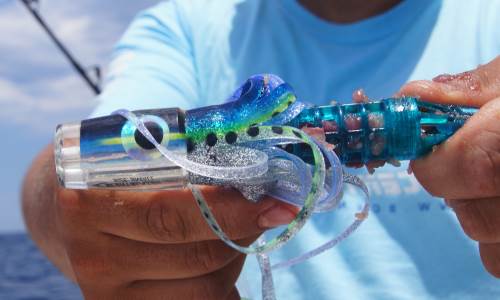Tuna is one of the most common and widely found oily fish species in the world's oceans. The various types of Tuna will be found in different climatic conditions, these oceans ranging from relatively cold freezing water to quite warm water conditions. You can almost guarantee there will be one type of the Tuna species swimming in your local waters.
Below is information on the best way to find and catch Tuna. What tackle and techniques are needed to hookup and land this awesome eating fish.
Ways to catch Tuna
The first and best way to finding and catch Tuna is trolling with scented trolling lures. Then you have Live Baiting, Jigging, Spinning and Fly Casting are also alternative and sporty ways to hookup Tuna.
Locating Tuna
Tuna searching is an art and skill that takes years to master. Most anglers go days, weeks and months without catching one. Let alone seeing a Tuna, good crews will catch Tuna every outing. There are a few tips and tricks to point you in the right direction of finding and catching Tuna in the location you're game fishing.
Locating Tuna in our oceans can often be a difficult task. The reward comes when you've invested precious time and money into Tuna fishing and the multitudes of available tackle, and your standing there waiting with all lines in the water, then all of a sudden every lure in your spread gets ripped off by the running Tuna. This is what makes game fishing so addictive.
Like all styles of hunting the hunter needs to know the territory. In big game Tuna fishing, understanding your environment is a must. What happens under the water is more important than above the water.
Research is needed to know where reefs, artificial reefs and underwater rock formations. Further out to sea, charts will show seamounts or underwater mountains and canyons. Also knowing where you're continental shelf starts and ends. Water moves around these underwater structures and provides food to Tuna.
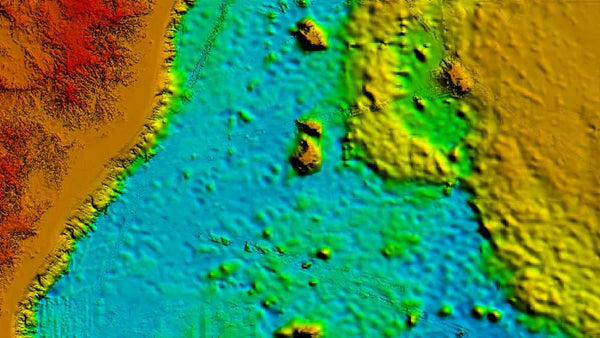
Days before going Tuna fishing, we always monitor the weather and tide patterns. The tide is dictated by the lunar or moon cycles. This sea movement helps pull food for Tuna from the bottom of the ocean up to the surface these are called "up wells". Up wells, contain food for Tuna like Cephalopods, Clupeids, Arthropods, Planktonic, Tunicate and Algae.
Reading the sea, to find Tuna is a skill and the best way to learn is from others especially "old sea dogs". Current lines and up wells are easy to spot. The hard concept to understand is "the underwater rivers". These underwater rivers differ from the sea water around them. These sea rivers are stream of water that have a different water temperature and are good place to find Tuna. The correct water temperature is one of the most important factors in successfully finding Tuna.
Tuna, being one of the more temperature sensitive fish in the sea, It's important to learn a lot about your Tuna target and their natural environment. What water temperature your Tuna likes to live in is a good place to start. An example of this is Southern Blue fin Tuna who like the cold and dogtooth Tuna like warmer waters, whereas, Skipjack Tuna love almost all types of water.
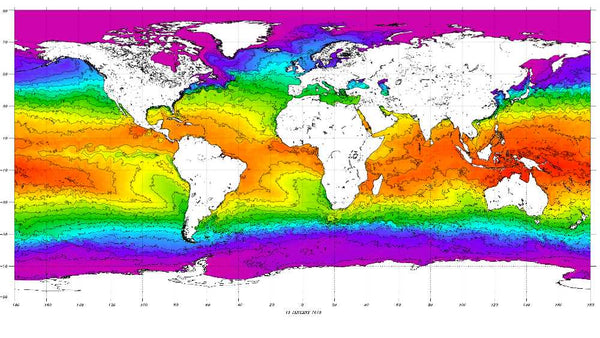
Once out at sea a good way to find Tuna is to troll lures in a straight line out to sea this is called a survey line. Keeping eyes open for birds and water temperature. Trolling lets you cover more ground so it's easier to find the Tuna. As you troll the survey line take notes of temperature change what you see in the water and current lines.
Running a survey line is very helpful when you first start out to sea Tuna fishing. This is where you keep one course, (weather permitting) looking for and at water temperature and current lines. Also keep an eye on on-board sonar device for fish. When you come across changes you can "GPS plot" these spots and you can return to these same spots located in your GPS at a later time.
Low light is also a good time for a Tuna hookup. In our Scent Blazer chambers we use LED lights and glow stick to attract more fish to the bite. This works well at sunrise and sunset or when you have a low level of light. Can also be good for a cloudy or over cast day.

When rock fishing for Tuna, the best location is just past the "bubbling" water. This is best when the tide is going out and you can use a float or balloon to push your bait out further. Having the wind offshore is also a big help for pushing your bait out and it's also safer. Most of the Tuna found when rock fishing are small Tuna types such as Bonito.
Another location to come across Tuna is in the open water. When we hookup these Tuna there is no sight on the surface, nothing, no birds around and no changes in the water or water temperature. Just a bang of the ratchet which sounds of furiously, and we have hooked a small jellybean Tuna. Most of the time it's on the long rigger, which is a chain of 6 inch Scent Blazers lures with sardines used as scent in the chamber.
Research
Before going Tuna fishing you need as much information and gather as much intelligence as possible. Going to the local fish coop or fish market is a good way to find out what's around. If the commercial fishers are catching certain fish, then it's also good for the sports Fisher. Speak with others that go out and get all the information you can. Fishers are reluctant to tell others about all the spots they hookup at.
Another good thing to do is keep your ear to the marine radio days before and always on the day. Your marine radio is a must when Tuna fishing. If you have other fishers fishing the same area for Tuna use your marine radio to contact them. Having many boats looking for Tuna instead of one is going to make finding Tuna, alot easier.
The right thing to do when you find the Tuna is to call all the other boats in the area. This will make you look good but when the day comes and you can't find Tuna others will be more willing to call you over when they find the Tuna. In game fishing, working as a team is far better than trying to find the Tuna solo.
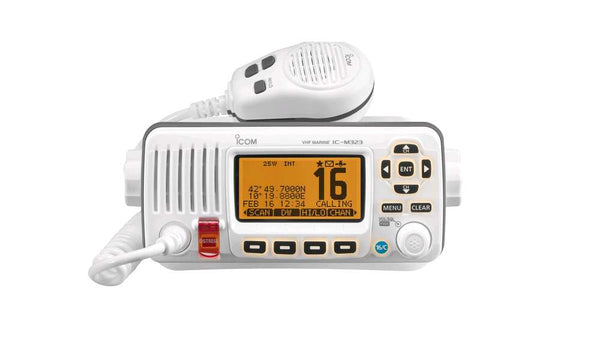
Radar is also a helpful real-time tool when at sea. Good radar systems on a boat can pickup birds that may locate Tuna. Tuna are very messy eaters and leave a lot of scraps when they feed. Seabirds are well aware of this fact and are always ready to take advantage of an easy meal. Tuna push bait to the surface, trapping it and making it easier to feed on.
Two of my favourite sea birds are gannets and terns. Whenever we encounter these two we nearly always find Tuna. Gannets are easily visible when they circle about high up making them true sign posts in the sky.
Tuna Tackle
Tuna Trolling Lures
Choosing the right lure to successfully catch Tuna is not at all tricky. After months of trial and error, and extensive tests, the Scent Blazer Crew have compiled a mountain of information on how and why Tuna react better to Scent Blazer Lures. Firstly having the ability to fill the Scent Blazer Lure with bait is without a doubt the biggest benefit over any other trolling lure. Not only do the Scent Blazers look like a fish they taste like one too.
Scent Blazer Lures can be the heaviest or lightest lure on the market. Our lures give you the ability to add more weights to your lure, to forward weight or centre weight the lure depending on the conditions you're in. On a windy day a line weight and or lure weight gives you full control over your lures.
You can also add glow sticks or LED lights to your lure, and all this can be done in under a minute while you're out on the water. No Tuna stands a chance against the versatility of Scent Blazer lures.
After all this research, Scent Blazer has designed a number of Tuna lure packs for trolling big and small Tuna types. The lure packs are fully rigged to IGFA standards and are ready to use.

Tuna Teasers
Tuna hunt by smell, swimming along in large schools picking up different scents in the oceans water columns. Having the scent in your lures is one thing but having that thick burley, chum trail is what will bring those Tuna to your spread.
Burley, chumming while you troll, now you can, not only do your lures taste like fish but now the Tuna can home in on that strong fishy smell. The amount of fish pieces falling out the back of the teaser will not be enough to fill up the fish but only make them switch to feeding mode making your lures irresistible to Tuna.

Ways To Catch Tuna
Trolling for Tuna
When trolling for Tuna it's all about the scent in the water for the Tuna to track and follow the boat. At Scent Blazer we found when we had our prototype lures out they were the ones that got hookups. Tuna find food by smell so having lures with scent chambers was a no brainer. Most of the trolling lures Tuna take are the smaller lures and the smaller lure chains all with scent in the chambers.
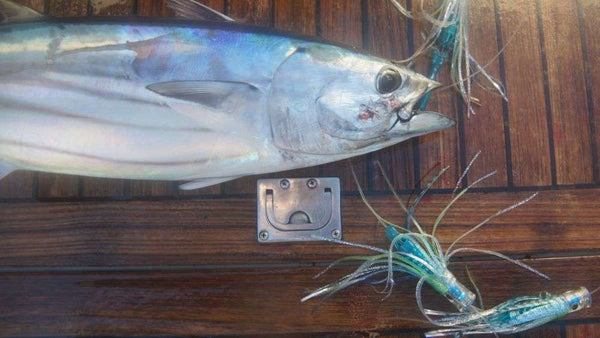
Cubing for Tuna
The idea behind cubing is fist find the Tuna through trolling then set down a cube bait trail downstream in the current making shore not to break the scent trail. The trail needs to be long so space out the trail. The bits of bait will drop through the water table and release scent. This will attract the Tuna to the back of the boat.
The best bait fish to cube for Tuna are pilchards and Sardines due to their high oil content that makes a better scent. Tuna love this oily small fish and it's a main part of all Tuna diet. To go out cubing for a day you will need a lot of bait. We recommend cutting them when frozen onshore with a big knife as its safer. Cut into small pieces around 20mm or 1inch in size.
Drop the rigged bait at back of the boat with the reel having a light drag set, ratchet on. Keep cubing when you have hooked up. The first hookup is good to keep in the water as it will attract more fish to the back of the boat.
Live Bait Tuna Fishing
This is one of the best ways to catch a large fish, using a small live fish which remains alive with a hook bridal rig. The first step in live baiting Tuna is to catch your like bait. This is easy with a string of small hooks and just a little bait on the end. The skill is keeping them alive until you get to the big fish fishing grounds. One of the best ways to keep them alive is in a bait tank. This is a tank of water with an air ration pump. Warning too little or too much air in the water can kill the fish.
Jigging for Tuna
If you're in need of an upper body work out then Jig fishing is your type of fishing. You need a lot of energy to do this type of Tuna fishing. It's only recommended to do after you find the Tuna and when they are running deep. Jigging is when you have a weight and hook and you jiggle it around, moving it about quickly up and down, from side to side in a jerking motion.
If you hookup a Tuna trolling, then you're in the correct place for Jigging and Cubing as Tuna are a schooling fish. When setting up your Jig add a bait chamber to the line as it will release scent and attract the fish to your jig hook.

Fly Casting Tuna
A lot of fishers think fly fishing is just for fresh water; well they couldn't be further from the truth. Saltwater fly fishing is now all the rage. Use a sinking weighted fly so you can drop the fly into the water table after the cast. The general rule is, if you can see Tuna you can catch them on a fly. Especially fun and enjoyable when large schools of Tuna are on the boil.
Spinning for Tuna
When we spin cast for Tuna we use the Scent Blazer 4inch or 6inch lure with weight inside the bait chamber and a bit of scent to help with the hookup. Spinning for Tuna, works well when you can see the Tuna on the boil or in a bait ball.
Tuna Trolling Spread
When it comes to a Tuna spreads there are two types, big and small. Fishing for Big or Small Tuna is relative to tackle size. Below is the type of lure spread we use for Big Tuna like Southern Blue Fin Tuna over 2 meters long at 100kg and above. We also add light at dusk and dawn to attract Tuna to the lures. Tip: Run them long, run them deep.
The type of trolling spread you use is relative to the equipment you have. Basic rule is if you're on a boat and moving put your trolling lure out. The bigger the boat the more lines you can have and outriggers are a must on a large boats. Sailors also troll when out to sea as it's an easy way to go and catch Tuna.
When thinking about a trolling lure spread you need to think in three dimensions it's not just about dragging lures along the surface of the water. Using head types like slant and weight will make the lures dive and stay below the surface, so Tuna can easily see them.
The number one spot for Tuna in a trolling spread is the shotgun position. Because it's the longest line out it has the best chance for a hookup. Then the Long Rigger on the starboard side and then the Short rigger on the port side. Unlike Marlin keeping your lures in the clear gives you a better chance for a hookup with Tuna.
Trolling Lure Spread
Below are two examples of Tuna trolling lure spreads. One spread has five lures and the 3D spread has seven this is not for everyone. It's very hard to manage seven lines so start with one and work your way up. It can take many years to learn to manage your spread and the type of boat you use is also need to be taken into consideration. Start with the Shotgun as its longest then the Long Rigger then Short Rigger as they are out wide. Then the Long Flat and the Short Flat and to finish with the Long Corner and the Short Corner.
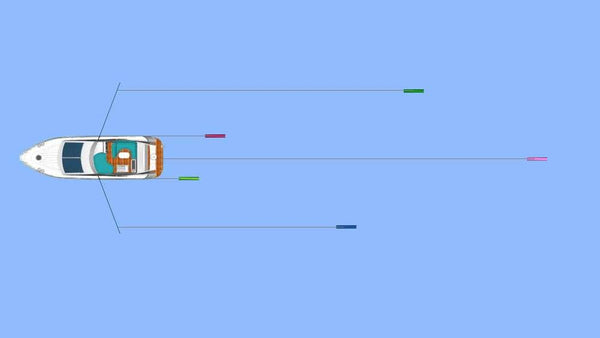

The Hookup
When hooking Tuna it's the type of hook that will determine the style of fishing you need to do. Generally two types of hooks are use J Hooks and circle Hooks. Using a circle hooks needs to run to set the hook. Always have a slack line and a light drag set. When they start to run you need to tighten up the reel drag so you can set the circle hook. With a J hook it's about the fish striking hard for the hookup. Tuna travel in groups so you can get a single hookup and double hookup but rarely triples and almost never a quad hookup.
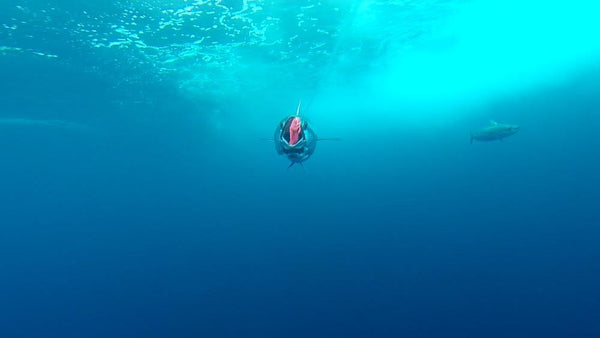
For a multiple hookup when trolling wait a while before slowing the boat down and even then, don't stop! Keep a slow forward motion of movement in the boat. This will also help keep your lines straight and reduce tangles and give you the best chance for a more than one hookup. A few years ago, we had a five way hookup on Southern Blue fin Tuna, We used lights at dusk in our Scent Blazer lures with bait inside. Landed three and lost the last two due to low light or no light and the lacking crew strength.
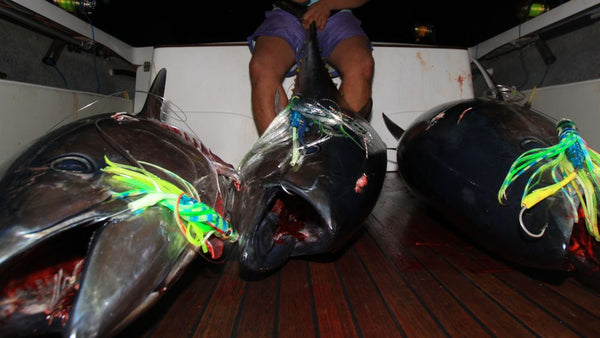
Landing Tuna
Many fish have been lost at this time, that is, the landing of the Tuna fish on board your boat or water vessel. One rule is to keep the noise down and remember large sound waves will freak a fish out so best to keep calm and quiet. Have everything ready such as a gaff, nets, mallet etc. As you're pulling the fish in, you will need to review and recheck the hook position.
You will be able see if the fish is well hooked or foul / badly hooked. If well hooked and the fish is calm you will have time to take photos on the water. If the hook is not set well you need to act quickly to secure the fish. If using a gaff, go for the head behind the gills which is a good spot. Remain calm and try to do it all in one shot. Don't gaff the body as it damages and infects the meat. Once gaffed, use a rope around a tail if it's a big Tuna.
Small Tuna are easier to drag in, using a quick flicking motion which is very helpful and proves a winner each time. If landing onshore, wait for a wave to help you get the fish in and as far away from the water as possible.
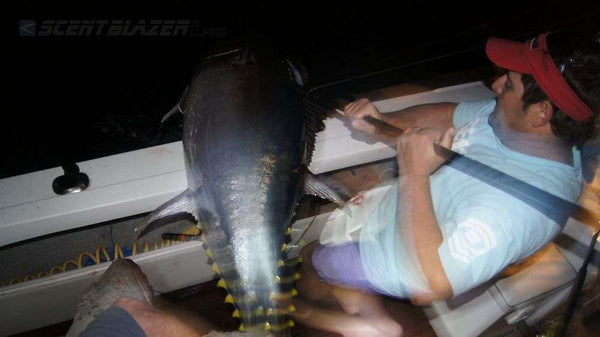
Dispatching Tuna
After taking happy snaps and evidence photos, the dispatching of your fish is all about speed. If you're keeping your catch it needs to be dispatched quickly. So as to get the best quality meat from your Tuna you need to bleed it while it heart is still pumping. Stun the fish with a club or hard surface to the top part of its head just behind the eyes. If you feel the need use a brain spike, not necessary. Then with a sharp knife you need to make a cut in an artery so the heart can push the blood out of its vascular system. The best place is behind the gills near the spinal column for the best bleed out. A good place to do this is in the water. This blood scent also helps to attract more fish to your hooks.
Once the water is clear of blood it's now time to gut the fish. With a knife cut from the anus all the way up to the pectoral fins and through the gill collar opening up the chest. Remove gills and all the entrails (guts) in the chest cavity. Keep what you remove so you can add to your scented teasers. Pack the fish in slurry of saltwater and ice. The quicker you drop the temperature the better the eating fish.
Types of Tuna
There are quite a few species of Tuna that are targeted by fishers such as Albacore Tuna, Atlantic Bluefin Tuna, Bigeye Tuna, Blackfin Tuna, Longtail Tuna, Skipjack Tuna, Dogtooth Tuna, Frigate Tuna, Southern Bluefin Tuna, Pacific Bluefin Tuna and the more widely spread Yellowfin Tuna.

Yellowfin Tuna
Found in tropical and subtropical seas worldwide in waters between the temperatures of 18C to 31C (65F to 88F) below the thermocline depths of at least 400m (220 Fathoms).

Albacore Tuna
Large albacore is found in waters of 13 to 25C. Good eating fish marketed as white meat Tuna and good eating. Spawning occurs at sea surface temperatures of 24C. 20kg or 44-pound female may produce around 2.5 million eggs.

Bluefin Tuna
This pelagic species is found close to shore and can tolerate a wide range of temperatures, of 22 to 25C. It schools by size and sometimes together with other Tunas. Eats schooling fish like sauries, hakes, and shrimps and cephalopods. Adults prey on cephalopods and larger fish.

Bonito Tuna
Bonito also called Oceanic Bonito is widespread and abundant in the Indian and Western Pacific Ocean. This pelagic and oceanodromous species occurs in open waters and remains close to the shoreline and found to 50 meters or 27 fathoms depth. Schools by size and with other scombrid species and feeds on small fishes, especially on clupeoids and atherinids also feeds on squids, crustaceans and zooplankton.

Skipjack Tuna
This pelagic family of fish are widespread in the Eastern Pacific from north to south. Also called Macarela, Negra, Pataseca and very really seen in surface temperatures below 23C or 73.4F. The maximum length is 84cm or 3Feet and biggest around 11kg or 24 pounds.
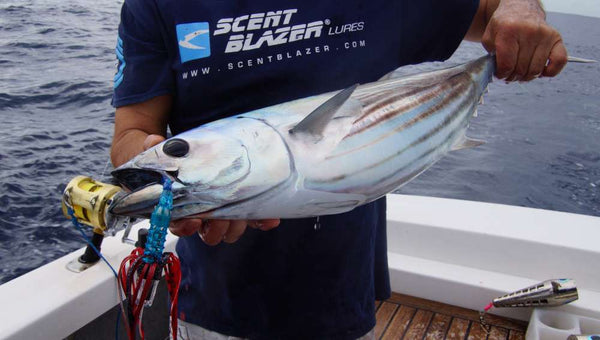
Dogtooth Tuna
This fantastic fish can be found in the Pacific, Red Sea, and East Africa north to Japan and to South Australia. Travels in small schools and with other types of Tuna spices. Maturity is around 65 cm, or 2 foot and maximum size is 247 cm or 8 foot and the larger size is 120 kg or 265 pounds.

Bigeye Tuna
An epipelagic and mesopelagic species that that likes surface waters of 16C to 19C or 60F to 66F. Can also swim for periods of time in waters of 13C to 25C or 55F to 77F temperatures. Feeds on Paralepidids, Crustaceans, Hyperidean amphipods, Phrosina semilunata, Paralepis speciosa and cephalopods.
Little Tunny Tuna
Little Tunny Tuna are widespread in the Atlantic and around other parts of the world. They can be found inshore around reefs and islands and along the continental shelf. Found in surface waters and feeds on clupeoid, crustaceans, squids, hyperiid amphipods, heteropods and tunicates.

Longtail
These fish are found around the South China Sea, coast of Thailand and Malaysia, North Arabian Sea also in the Indo-West Pacific and Australia. They feed on prawns, crustaceans and cephalopods. Mature is at around 40cm long and also called Atun Tongol and Thon Mignon.
Tuna Food
The life of a Tuna is a happy and harmonious one being part of the food chain, schooling and swimming and eating bait fish keeping the ocean in balance. As mentioned, Tuna are found in many varieties and species and in good healthy numbers found in a wide range throughout the world. To avoid total annihilation and extinction it is important to keep this one important factor in mind, and that being mindful of what Tuna eat. There are six types of food Tuna eat. Like Cephalopoda, molluscs, octopuses, squid, cuttlefish and Nautiloidea.
Tuna also munch on Clupeoid which are soft finned fishes, small fish, herrings, sardines, menhaden, shad, salmon, and tarpon all small and easy to eat.
Tuna eat Arthropods like crustaceans, copepods, crabs, lobsters, crayfish, shrimp, krill and barnacles, which is all they need for a strong backbone and skeleton.
Tuna also eat Planktonic, bacteria, archaea, algae, protozoa diatoms, jellyfish, and various larvae. Tunicate are also eaten Ascidiacea, Thaliacea and Larvacea. For good Tuna health, Tuna love to eat vegies like the Algae family like photosynthetic organisms, the red, green and brown algae.
Enjoy your tuna fishing and stay safe on the water and take a look at all our Tuna fishing products.

